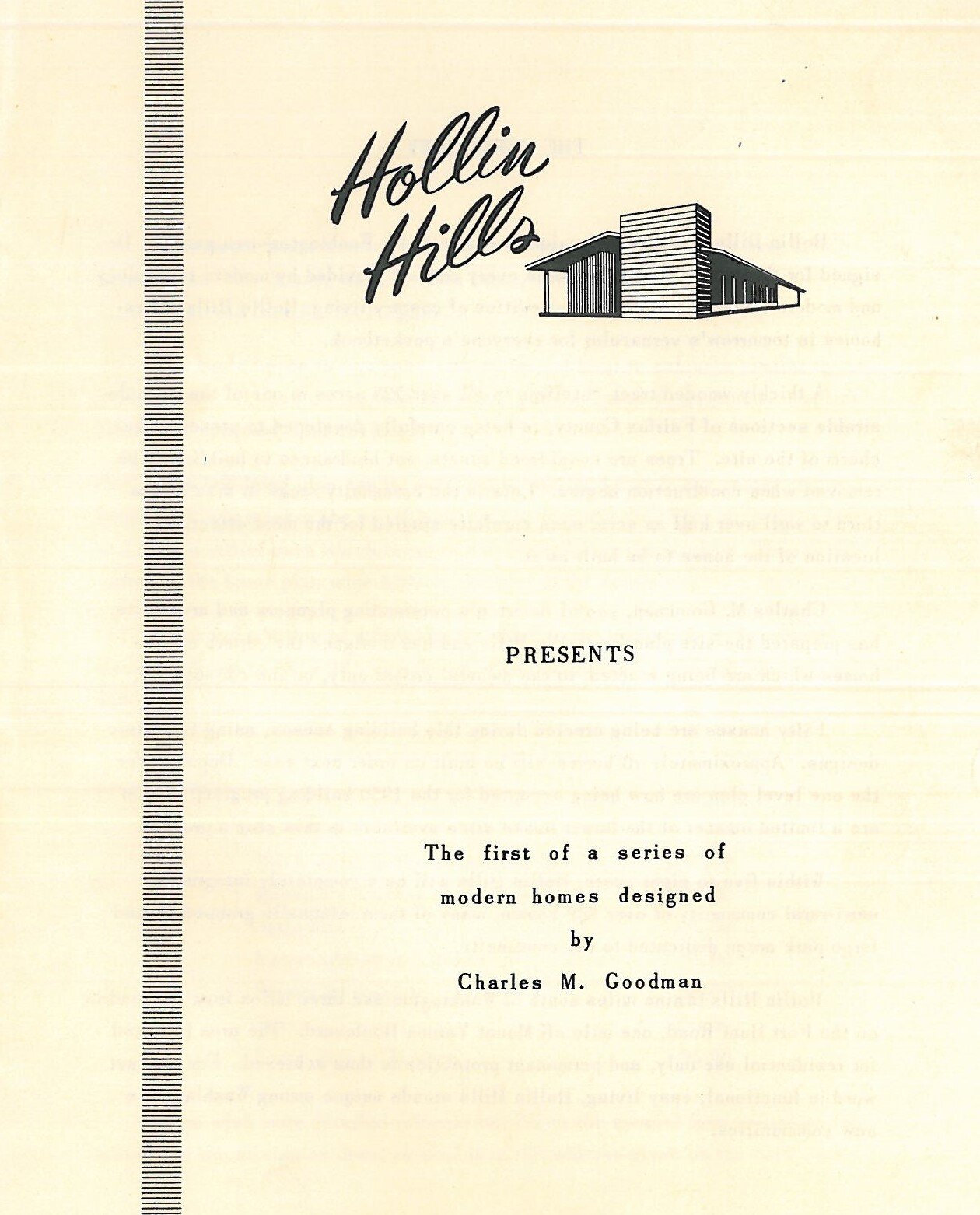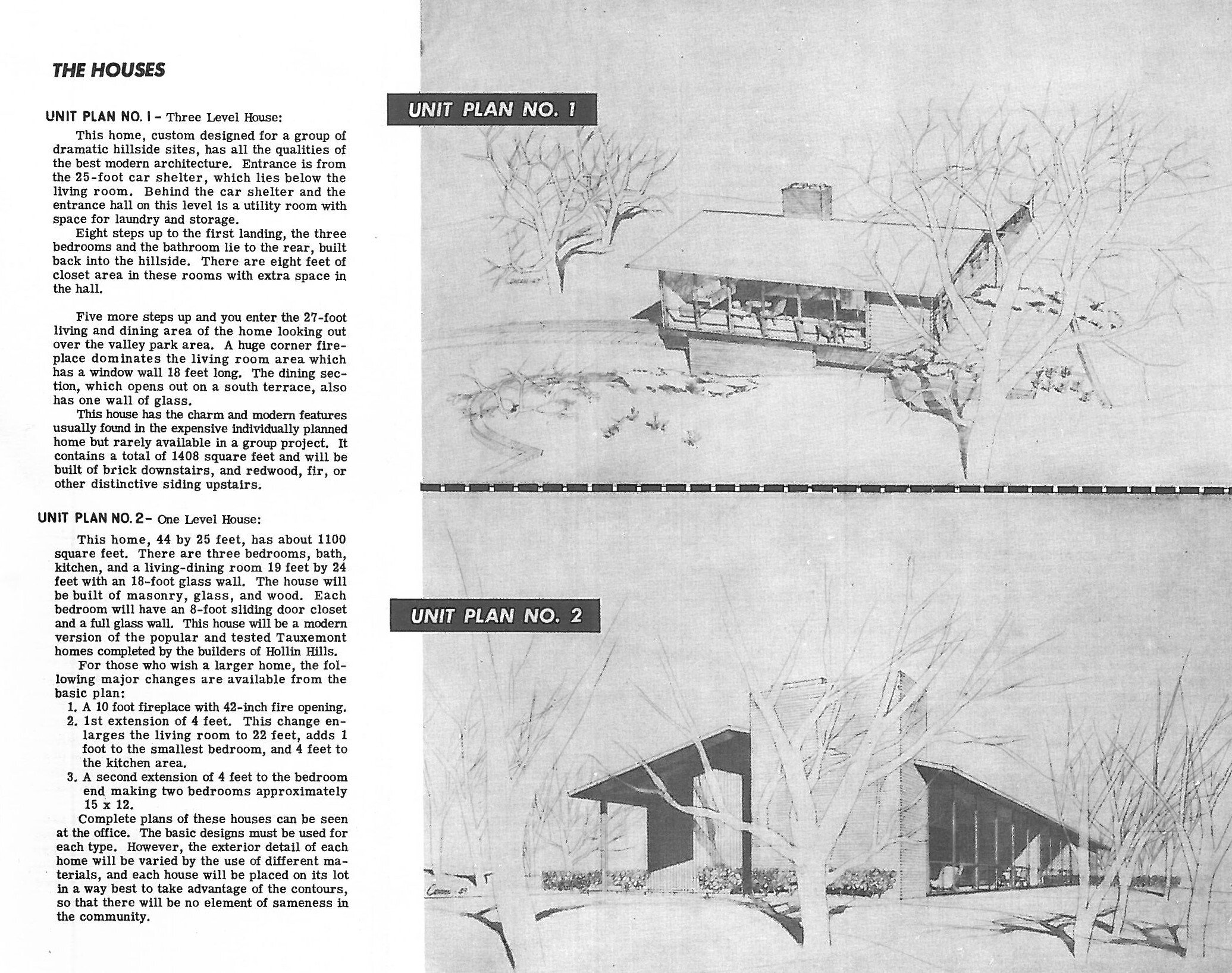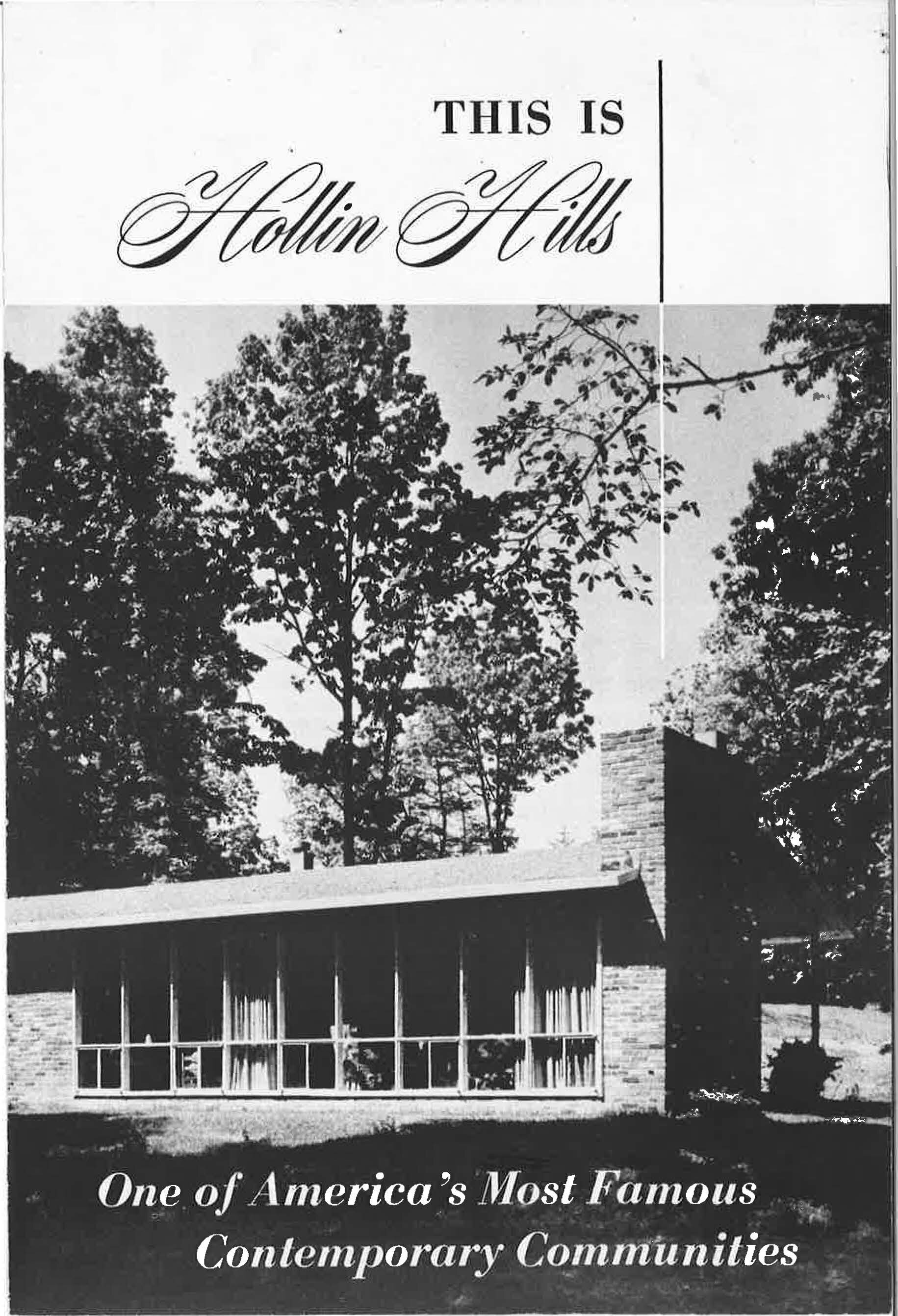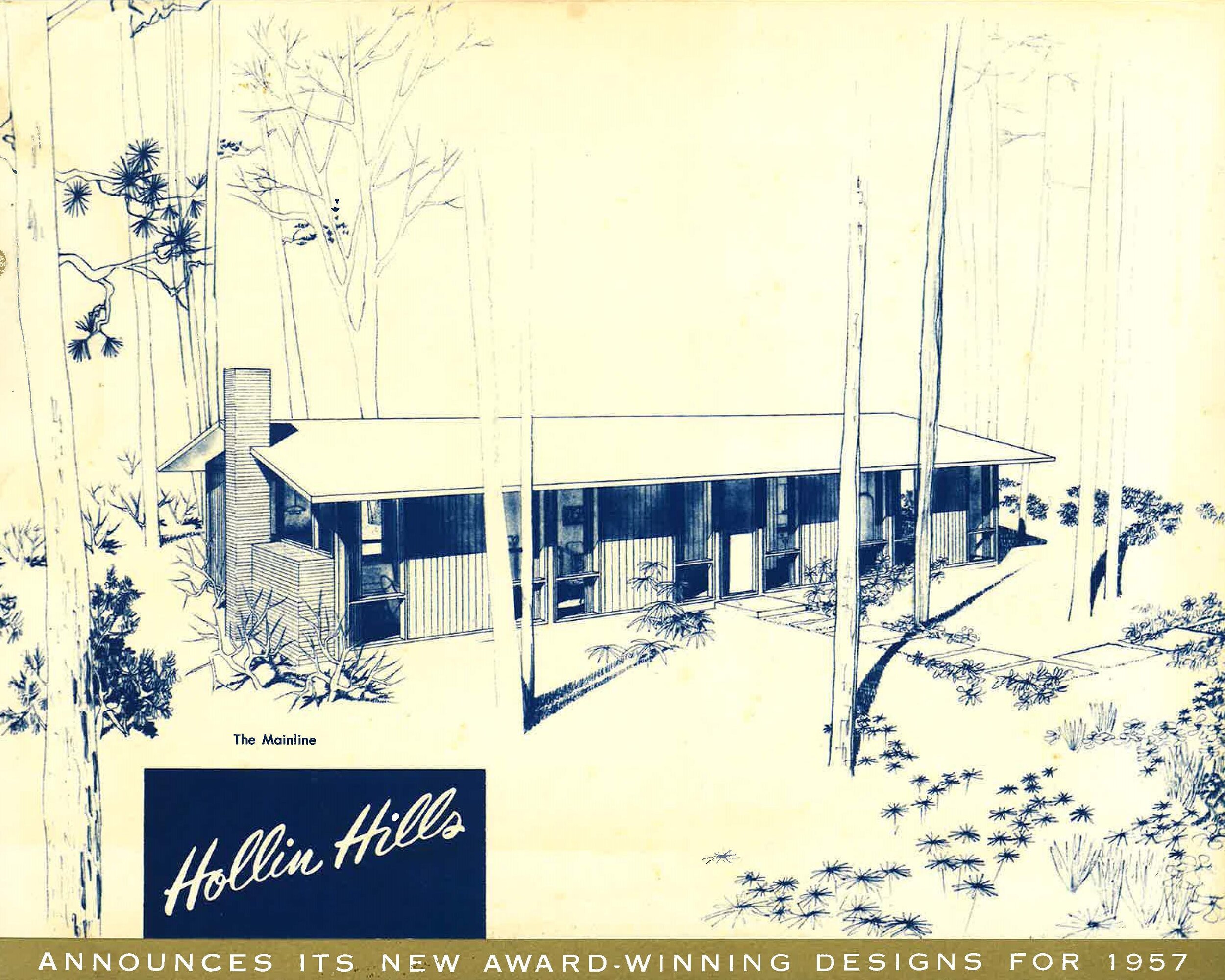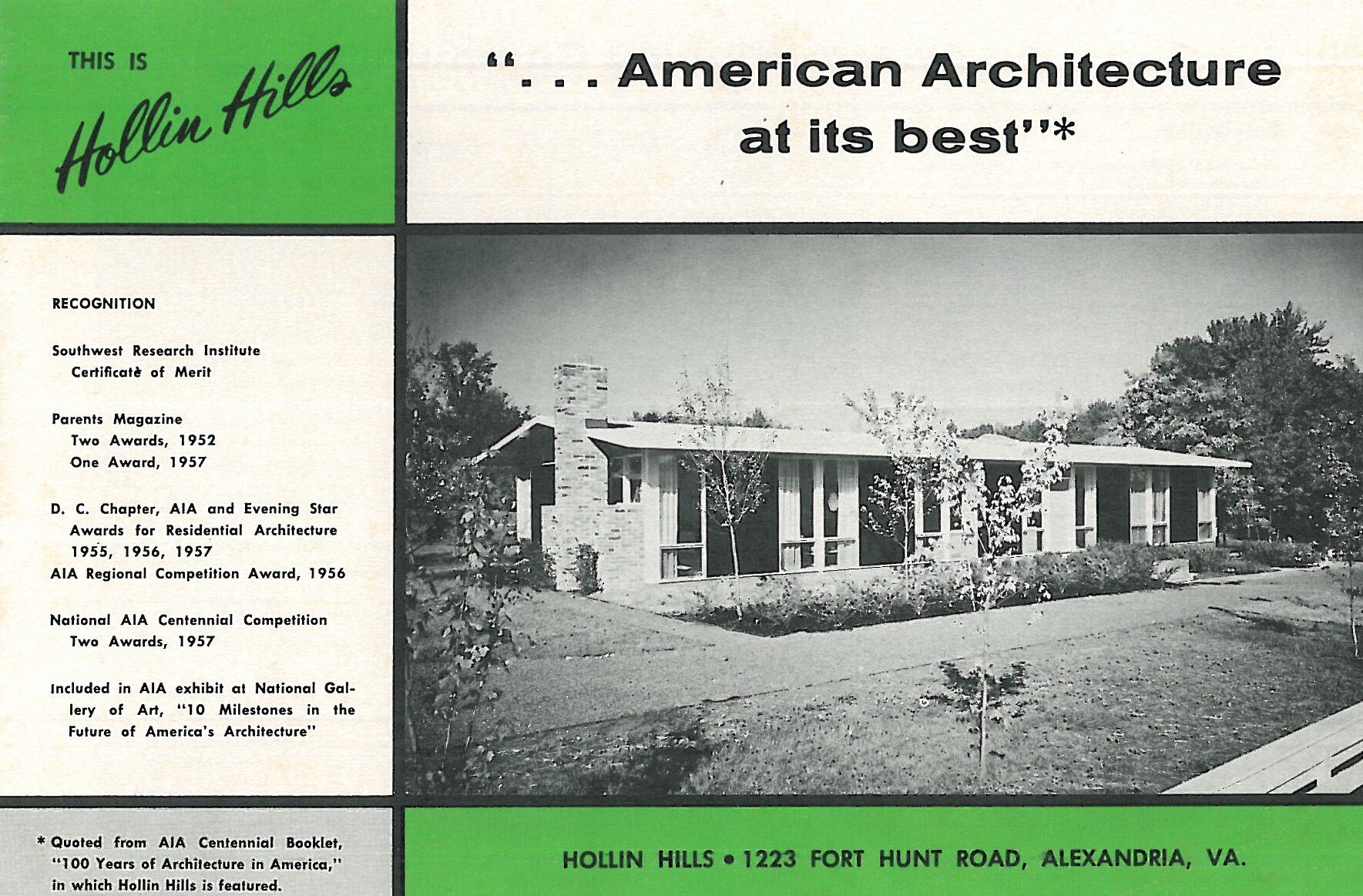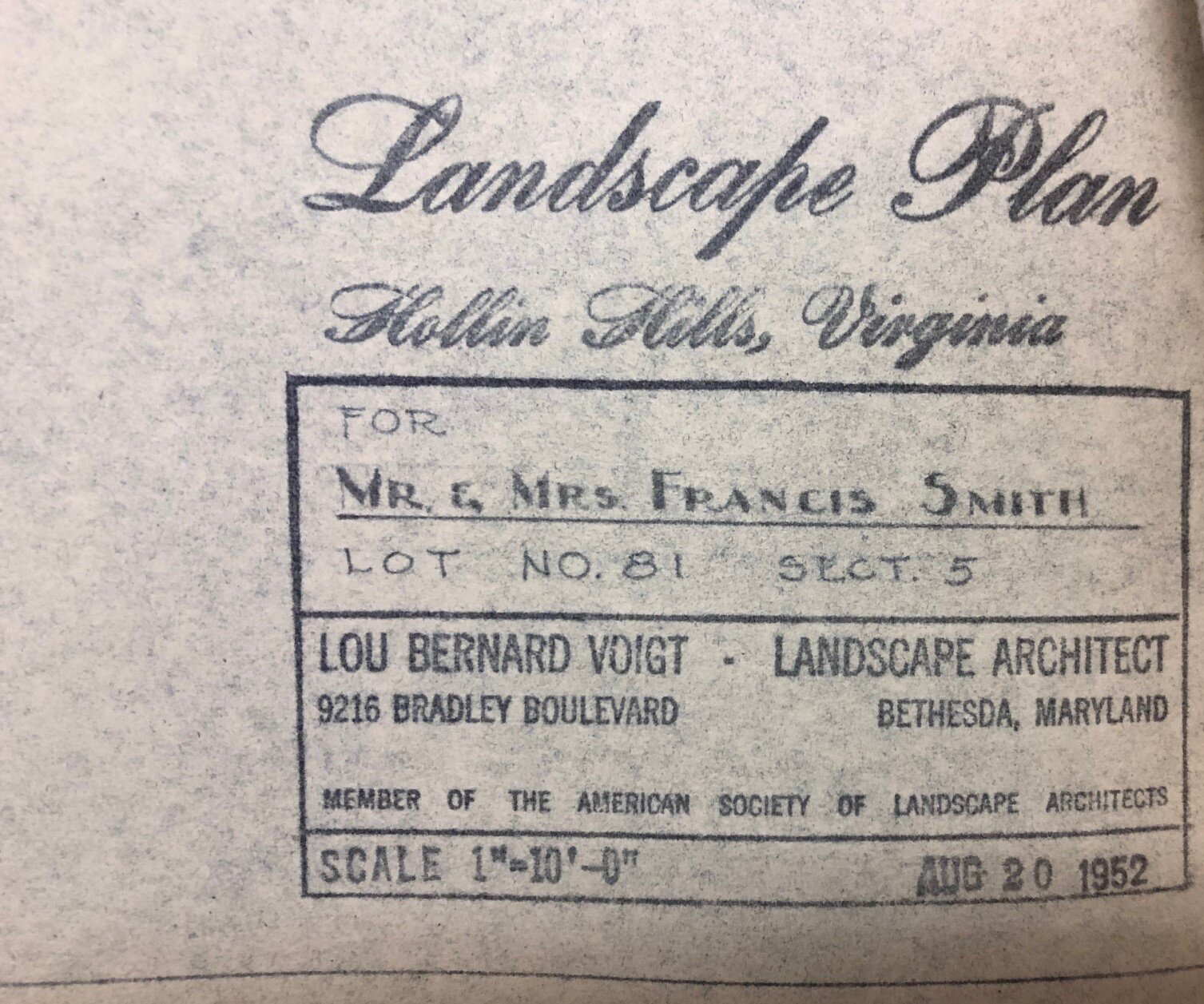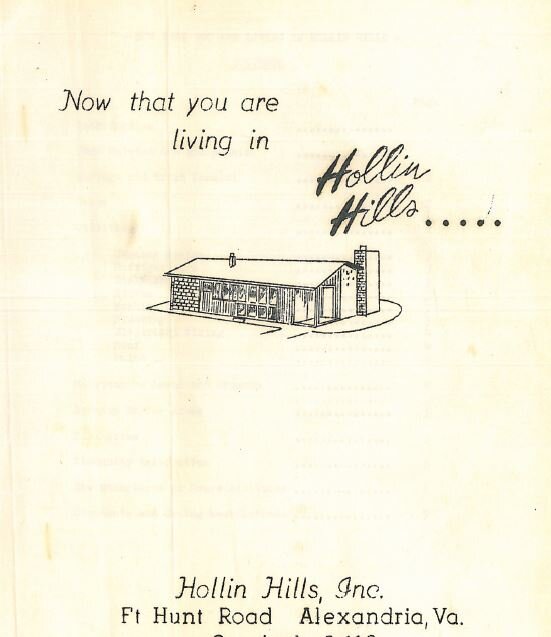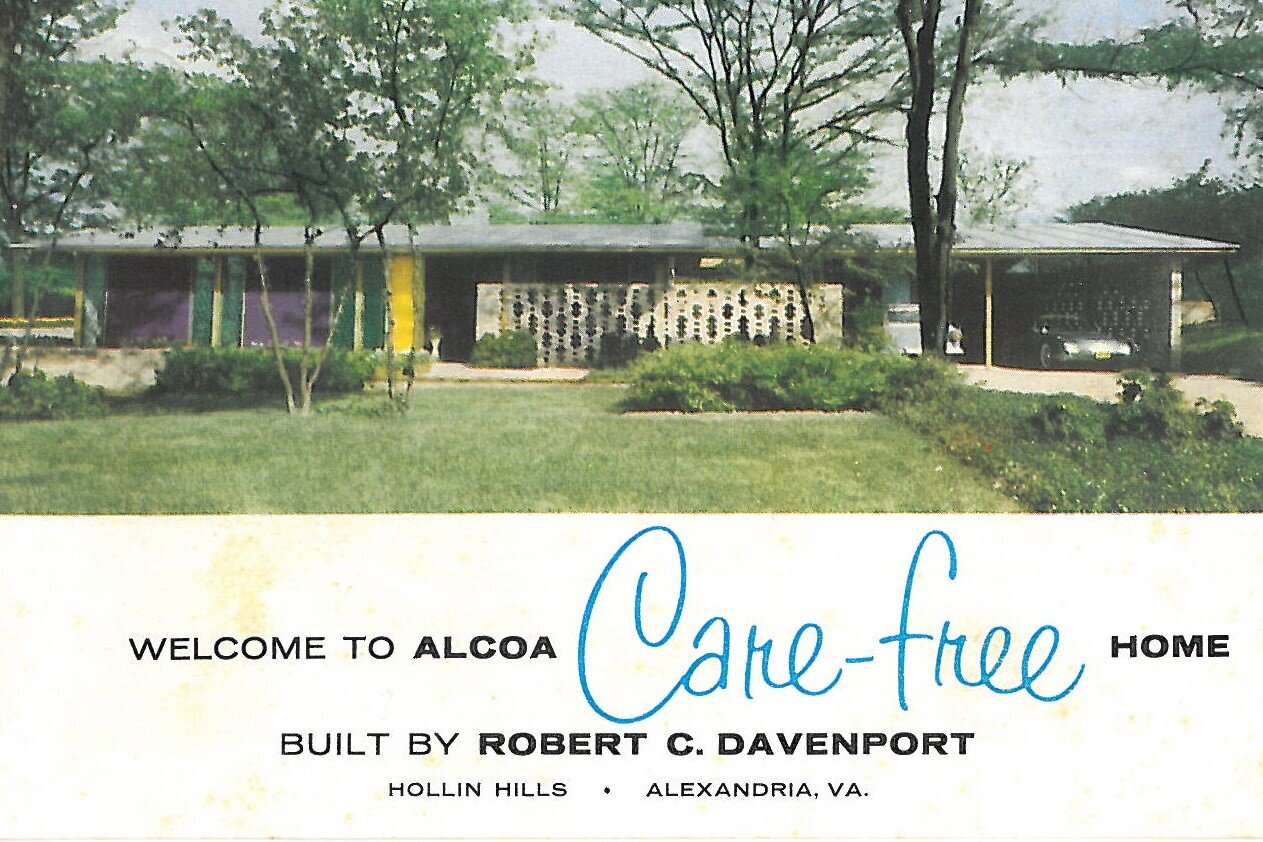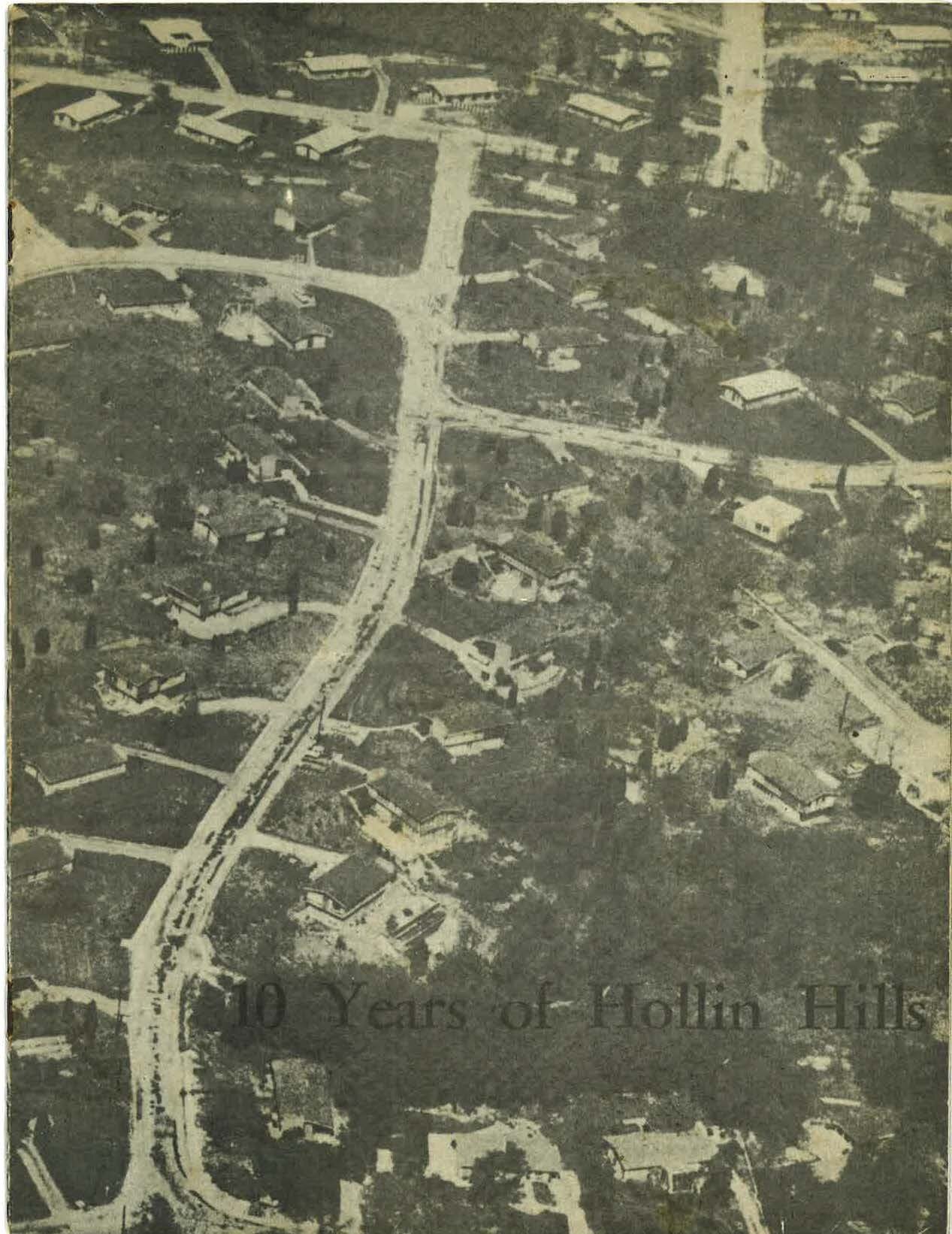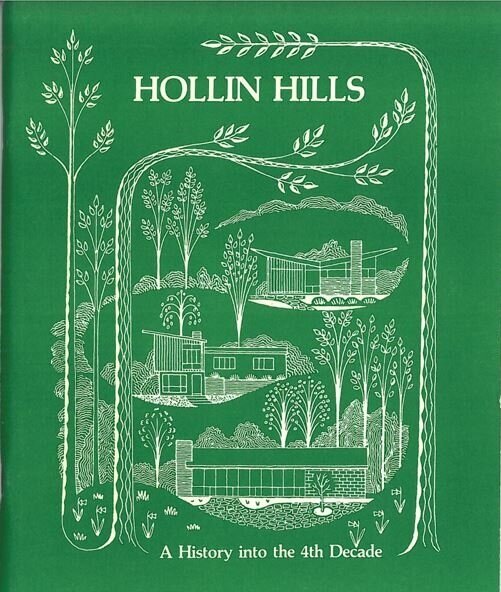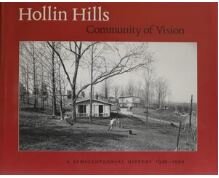Historical Publications
Hollin Hills has a long history of creating publications and sales collateral that capture the essence of modern style and design. These time-capsules snap moments in American post-war development and days in the life of a wooded Washington suburb.
Sales Brochures
The first Hollin Hills productions were Goodman and Davenport’s sales brochures showing different house models beginning with Unit #1 and #2. They made certain that buyers had a number of design “extras” that could be added to the basic design. The basic models Nos 1 and 2 were easily transformed into a number of variants to meet additional space or design requirements. In No. 1B, for example, a homer owner could substitute either brick or slate for the standard asphalt tile floor in the lower multi-purpose spaces. An attic fan ($195), hardwood flooring throughout ($290), an extra glass exterior door or a terrace ($250) were common extras.
Unit House No 1BE, with over 2,400 square feet had an additional bedroom, bath and storage space added to the uphill side of the upper living area. If a purchaser desired an additional four feet in the kitchen of a No. 2 design, the result was a No. 2K4 or a No. 2K4B4 if another 4 feet were also added to the bedrooms. By altering only the length of the house, not the width, the roof trusses, designed to span from the outer walls remained the same size and no costly structural modifications were necessary.
The collateral below illustrates how Davenport presented the limitless variations from the basic models and how new models like The Mainline, The Customline and The Award evolved. Each homeowner received a customized landscape plan by Lou Bernard Voigt or Dan Kiley and a personalized guide from Davenport entitled “Now that You Are Living in Hollin Hills”. In the late 50’s, ALCOA commissioned Goodman to design a modular “pre-fab” home using 7500lbs of aluminum. Only a couple of dozen ALCOA Care-Free homes were built, one of which was developed by Davenport on Elba Rd in Hollin Hills in 1957.
Milestones
In 1959, a group of residents produced “10 Years of Hollin Hills”. Interviews with Goodman and Davenport reveal their observations on the first decade, awards and plans for expansion. Early residents demonstrate the eloquent and loquacious tendencies that have become a hallmark of Hollin Hillers as they share insights ranging from the feeding habits of HH children to the milkman’s perspective on glass homes and lose dogs.
The 10th anniversary publication became the first of several milestone efforts to document the demographics, interests and the subjects of greatest concern (as measured by the monthly bulletin contributions). In addition to the retrospectives at 10, 35 and 40 years; the book Community of Vision was published in 1999 to celebrate the 50th Anniversary. Each of the icons below opens the booklets to enjoy. The Hollin Hills Community of Vision book is available on our “SWAG” page.
Parks
Among the most unique and defining features of Hollin Hills are the 7 distinct parks. The 30+ acres of woods and streams significantly enhance life in the community by providing cooling shade, sound absorption, and an aesthetic backdrop for homes. Away from the tumult of modern life, the parks offer respite and quiet recreation for strolling, hiking, and meditating. As part of the community’s eco-system, these largely forested areas are important as wildlife habitats and provide a wealth of material for nature study.
Nesting species of birds not typically found in urban or suburban neighborhoods thrive here, such as the barred owl, the red-tailed hawk, wood ducks, and several species of woodpeckers, including the pileated woodpecker. Migratory birds rest in the parks and fatten up before their long journey north in spring and south in the autumn. Other species find shelter here too, including whitetailed deer, wild rabbits, red and gray fox, and a wide variety of butterflies. Much of this shelter is provided by the native trees populating the forest: yellow poplar, pin oak, willow oak, sweet gum, red maple, American beech, white oak, black oak, black gum, sycamore, Virginia pine, and red cedar.
At one time, many wild flowers delighted the casual observer and the serious student. Flowers such as marsh marigold, cowslip, mayapple, milkweed, toothwort, bellwort, false solomon's seal and asters once were abundant in the parks. However, the number has been severely reduced by the unchecked spread of invasive and exotic plant species.
In 1963 the “Park Trail” guide and in 1999 the “Trees of Hollin Hills” were produced by enthusiastic residents to help foster education and appreciation for both the student and the curious Sunday stroller.

